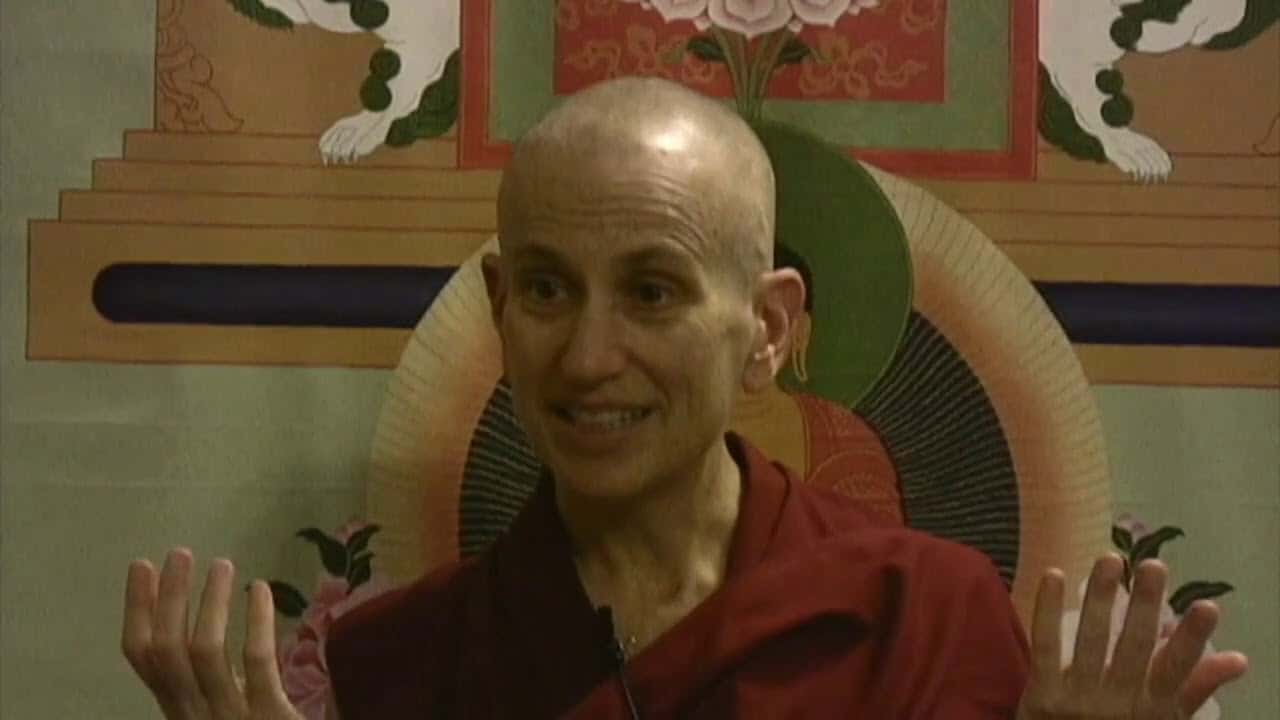Verse 21-4: Emptiness of mind
Part of a series of talks on the 41 Prayers to Cultivate Bodhicitta from the Avatamsaka Sutra (the Flower Ornament Sutra).
41 Prayers to cultivate bodhicitta: Verse 21-4 (download)
We’ve been talking about the buddha nature and in the verse here:
“May all beings meet the Buddha.”
This is the prayer of the bodhisattva when meeting someone.
When you meet somebody seeing their buddha nature, and then seeing them as the buddha that they’re going to be, and thinking, “May all sentient beings meet the Buddha.”
A couple of days ago we were talking about the natural buddha nature, which is the emptiness of the mind. There’s another way of talking about the buddha nature which is called the transforming buddha nature. These are the characteristics of the mind that can be developed and transformed and become the Buddha’s mind.
While the natural buddha nature—the emptiness of the mind—becomes the nature truth body of the buddha, the transforming buddha nature becomes the wisdom truth body of the Buddha—in other words, the omniscient mind. When we’re talking about the emptiness, we’re talking more on the side of ultimate truth. When we’re talking about transforming buddha nature, we’re talking on the side of conventional truth.
These are all the factors of the mind, like the seeds of our love and compassion that we have right now, the seeds of our good qualities that can be nourished and developed and transformed into the buddha’s omniscient mind. Love, compassion, wisdom, all these kinds of things. And here is where we also talk about the clear light nature of the mind. Clear light nature of the mind sometimes refers to the emptiness of the mind, sometimes it refers to just the conventional basic nature of the mind as clarity and awareness, or luminosity and awareness. This too is part of the transforming buddha nature because it’s on this basis that all the good qualities are developed, because all the mental states have this clear and aware nature of mind.
The transforming buddha nature is the one that’s emphasized more in like the Tathāgatagarbha Sūtra, that’s the sutra on the buddha nature, and on Gyu lama, or Sublime Continuum Treatise by Maitreya. Talking about the transforming buddha nature and the clear light conventional nature of the mind, in sutra, it’s not described real well. It is pointing people in the direction of tantra, because to get a more complete description of the clear light nature of the mind, we need to look in tantra. Especially in the highest yoga tantra.
Texts like Tathāgatagarbha Sūtra are pointing one in the direction of tantra where we can get the more complete understanding of the fundamental innate mind of clear light, that extremely subtle mind that in tantra is what you want to use to realize emptiness. That’s how you kind of make the transition from the sutra view to the tantric view of buddha nature.
We can think of all these things when we meet somebody, all the different qualities of their buddha nature that become the various kayas, or the various bodies of a fully enlightened buddha. So it’s this process of growing and transforming into a buddha which is something unique in Buddhism. There isn’t an irreparable gap between us and our refuge. We can become the refuge object.
Venerable Thubten Chodron
Venerable Chodron emphasizes the practical application of Buddha’s teachings in our daily lives and is especially skilled at explaining them in ways easily understood and practiced by Westerners. She is well known for her warm, humorous, and lucid teachings. She was ordained as a Buddhist nun in 1977 by Kyabje Ling Rinpoche in Dharamsala, India, and in 1986 she received bhikshuni (full) ordination in Taiwan. Read her full bio.


